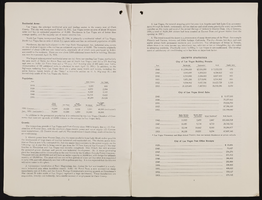Search the Special Collections and Archives Portal
Search Results

Transcript of interview with Eddie E. Buxton by Bernard D. Vardiman, March 30, 1976
Date
Archival Collection
Description
Text

Transcript of interview with Elbert Edwards by Ronald Johns, 1972
Date
Archival Collection
Description
On an unspecified date in 1972, Ronald Johns interviewed Elbert Edwards (born 1907 in Panaca, Nevada) about his life in Southern Nevada. Edwards first talks about his family’s move to Panaca, Nevada in 1864 and talks briefly about his work in Las Vegas public schools during the Great Depression. The two also discuss the Boulder Dam, Edwards’ involvement in politics, and mining in Nevada. He also talks about the cost to build a home in Las Vegas in 1936, the development of Boulder City, and the way of life in the small town of Panaca. The interview then moves on to the topics of the early territorial boundaries of Nevada and Utah, the atomic testing at the Nevada Test Site, and early water sources in Southern Nevada.
Text
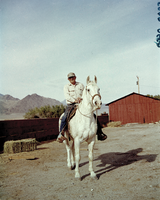
Phil Tobin on horseback: photographic film
Date
Archival Collection
Description
Image
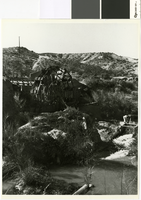
Photograph of waterwheel on the Muddy River near Logandale, Nevada, January 21, 1947
Date
Archival Collection
Description
38 foot waterwheel on the Muddy River near Logandale, Nevada.
Transcribed Notes: Bureau of Reclamation typed notes appended to back of photo: Boulder Canyon Project, Nevada Region 3 A 38-foot water wheel lifts water 30 feet from the Muddy River to irrigate a farm near Glendale, Nevada.
Image
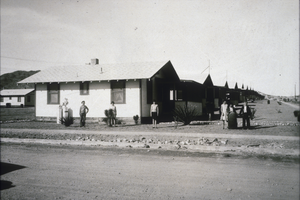
Slide of a cottage built by Six Companies, Boulder City, Nevada, January 7, 1932
Date
Archival Collection
Description
Image
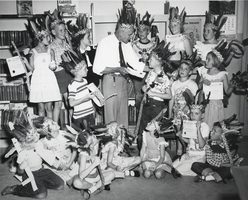
Photograph of the summer program at the Boulder City Library, Nevada, August 31, 1951
Date
Archival Collection
Description
Image
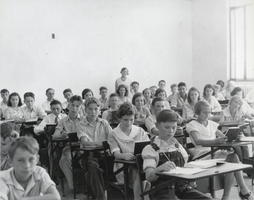
Photograph of Boulder City Elementary School, Boulder City, Nevada, October 5, 1932
Date
Archival Collection
Description
Image

Film transparency of the Boulder Dam Service Bureau Building, circa 1933-1940s
Date
Archival Collection
Description
Image

